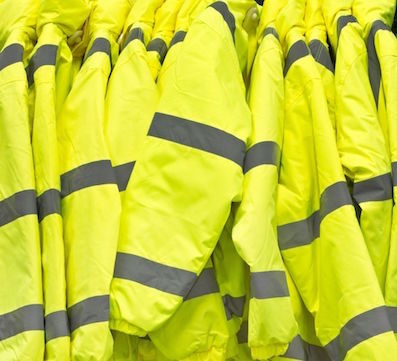 Cleanzine: your weekly cleaning and hygiene industry newsletter 3rd July 2025 Issue no. 1169
Cleanzine: your weekly cleaning and hygiene industry newsletter 3rd July 2025 Issue no. 1169
Your industry news - first
The original and best - for over 20 years!
We strongly recommend viewing Cleanzine full size in your web browser. Click our masthead above to visit our website version.
How hi-vis garments can last 50 washes instead of 25
 Did you know that most hi-vis garments only have a maximum life of 25 washes, with many losing their reflective properties after just five washes?
Did you know that most hi-vis garments only have a maximum life of 25 washes, with many losing their reflective properties after just five washes?
That means if hi-vis clothes are washed twice a week; they will no longer comply with current EN ISO 20471:2013 standards in just 12 weeks.
To ensure workwear and PPE help people stay safe and seen in challenging and dangerous working conditions, items need to be replaced when faded, torn, dirty, soiled, worn, defaced, or not visible from 300m, day or night. When hi-vis tape is damaged or soiled, it fades to a matt, dull colour. If it's not reflective or shiny, it's time to replace the garment.
Why Do Reflective Strips Fade After Washing?
It is essential to maintain the cleanliness of high visibility garments. If they are dirty the visibility will be compromised. Reflection strips are very sensitive to heat and chemistry, but most washing machines need high temperatures and large doses of detergent and other chemistry to remove industrial soiling such as oil and contaminants.
How to Maintain Long Term Visibility?
There is a solution for extending the life of hi-vis garments though. The Hydrofinity commercial washing machine - which uses XOrb technology - can help reflective strips keep their reflectivity for up to 50 washes, doubling the maximum life of most hi-vis garments!
Rigorous life extension testing that was verified via a third party earlier this year, show hi-vis strips that were washed in the Hydrofinity machine had a significantly higher retroreflectivity score after 50 washes than hi-vis strips washed in a comparison washing machine.
The control sample (which was unwashed) had a retroreflectivity score (CIL/m2) of 346. The sample washed in the Hydrofinity machine had a score of 314 and the sample washed in the conventional machine had a score of 98 after 50 washes.
Mike Ferrand, managing director at Hydrofinity explains why the Hydrofinity machine can extend the life of reflective strips:
"The XOrbs used in the Hydrofinity machine provide a gentle agitation which significantly reduces the damage caused to the high-tech fabrics and reflective trim whereas conventional machines tend to rely on aggressive agitation to clean reflective gear. Our machine also uses less chemistry and washes at lower temperatures than most conventional machines which helps hi-vis strips keep their reflective properties for longer. We aim to support textile service companies in reducing their spend on new textiles whilst reducing waste."
Hydrofinity customer, Georges, has 10 Hydrofinity machines across its five sites in France and specialises in the cleaning and maintenance of workwear. The company currently processes the outfits of 25,000 employees and has plenty of high-profile customers including SNCF, Renault Design and Air France. Georges recently won the contract to clean the PPE of workers restoring the Notre-Dame Cathedral; this was because it can remove all traces of ash and lead particles whilst prolonging the life of the uniform. To read more about Georges, visit:
For your local Hydrofinity partner, visit:
31st October 2019







